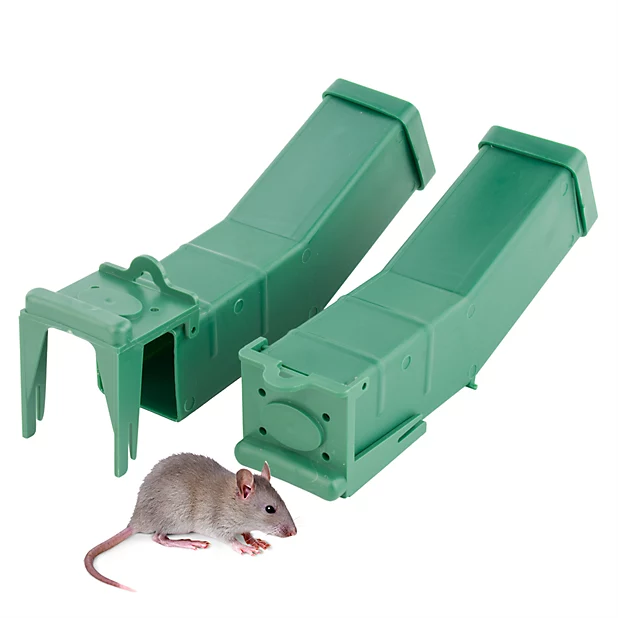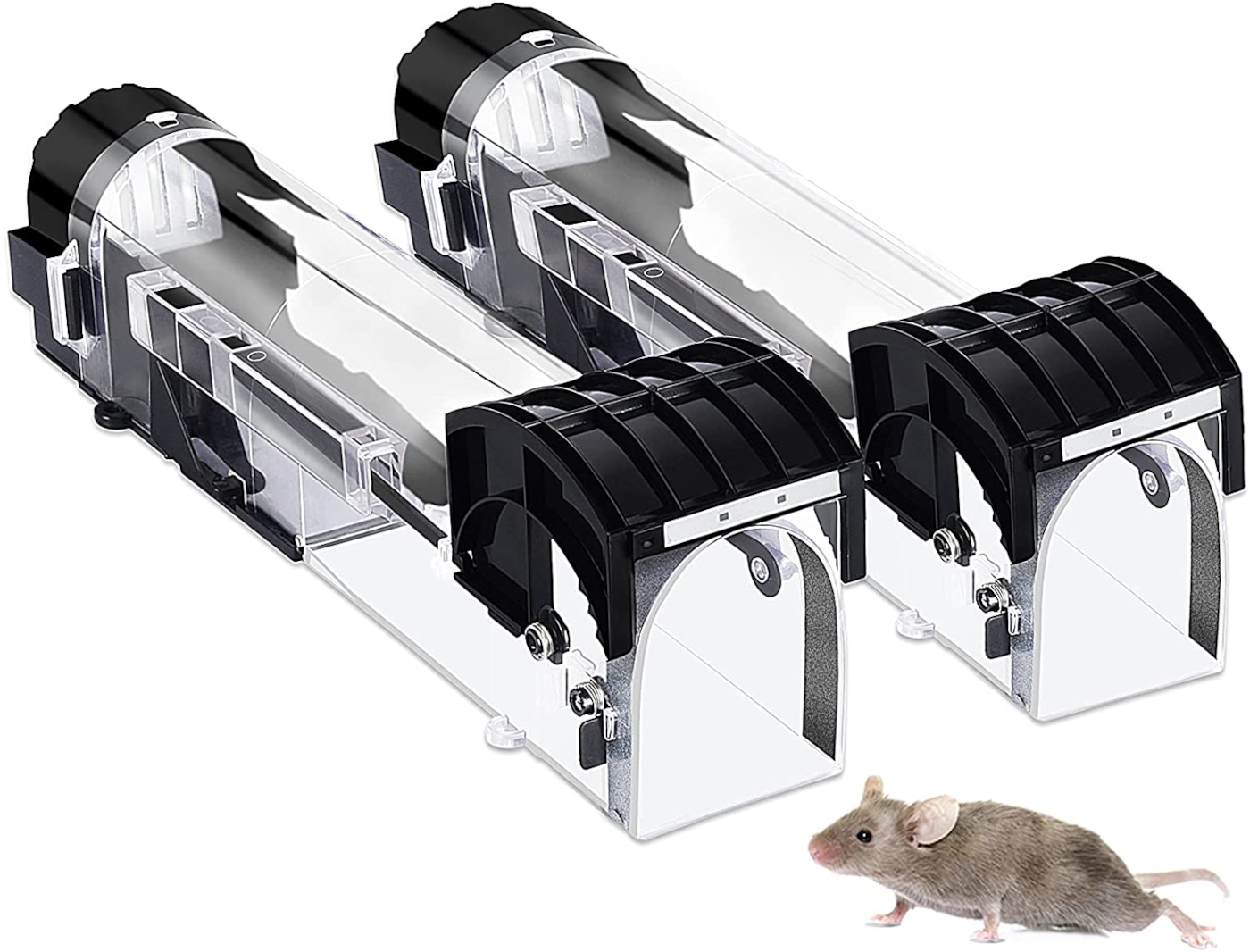Humane Mouse Traps
Is catch and release actually extending their suffering?
Added on the 4th of November, 2023
We’re told by product marketing that catching alive and then releasing a mouse to the wild is the humane thing to do. As much as I want this to be true I’m currently not convinced. With the stress of being held captive and then released into an unknown area, is this really the best option for the mouse or is to to alleviate our own conscience?
The weather has become rather cold of late and predictably a few mice managed to find a way into my house for some warmth. Once they’re in there’s almost no chance they’ll choose to leave again on their own. I dislike killing needlessly so I bought a couple of catch and release mouse traps, baited and set them.
This isn’t the first time I’ve used catch and release traps. A few years ago I bought a simple rocker style where the idea is that the angled section holds the bait and the weight of the mouse running up the angled section tips it, closing the door at the far end. I caught one mouse quickly and that was all. They very quickly worked out that if they knocked it onto its side before entering they could reach the bait and escape without difficulty. Clever mice, but not very helpful from my point of view.

This time I did a little research and found a style with generally good ratings, plenty of space to avoid injuring the mouse when the door shuts, a good sized bait station and a large platform with a sensitive trigger. Everything looked good, so I ordered two. A few days later, a quick examination to see how they worked, baiting and setting in a couple of good locations and all I had to do was wait.
The next morning I checked both traps and … nothing. That’s fine. Mice are prey animals and naturally wary of new things, so it can take a little time for them to decide the delicious bait is worthwhile. Still nothing on the second morning. The third morning, however, no, absolutely nothing. At this point I checked both traps carefully and noticed all the bait had gone. Given the mice physically can’t reach the bait station without stepping on the super sensitive trigger platform, I was irked.
I carefully examined the trigger and door release mechanisms on both and after a few minutes noticed there was a crucial spring missing from the door pivot on one of them. The mice could have been having a party on that trigger and it still wouldn’t have sealed them in. Great. At least I could find no obvious problem with the second trap, so I baited and set it once more while packing the faulty device away. Over the following dozen days or so I did actually catch three mice, but, each day the bait had been taken. So that was around 1 in 5 times a mouse stepping on the platform would trigger the door closing mechanism. Basically I was just fattening up the mice.

Okay, a lot of my experiences were annoying, but I did at least manage to capture and release three mice over a couple of weeks. Yet there are still a couple of points that have been concerning me.
The first is simply the time between capture and release. I was checking the traps as soon as I awoke and, if one had triggered, I would take it to a nearby nature reserve and release it into an area with plenty of cover as soon as I was able to, minimizing the time it would spend in the trap. Yet even this could result in it being confined for several hours if it was caught in the very early hours of the morning and that has got to be immensely stressful for it. Consider how long a mouse could be trapped if someone didn’t check very often, whether through disinterest or leaving for work before it was caught. Then there’s the transportation, in my case placing it into an opaque bag and carrying it for 10 to 15 minutes before release. Again, it’s going to be very stressful.
The second point is about the release itself. In theory this is a good thing, ensuring more wildlife continues to exist in our world and possibly makes up for all the stress the poor thing has experienced along the way. But… mice only really enter my house when it’s very cold outside, so typically during winter when there’s little food around and creating a warm shelter could prove difficult. Of the three mice I released, two were in dry temperatures around 1c while the final one was just below 0c with a thin layer of snow on the ground. Frankly, if any of those mice survived more than an hour or two, I would be very surprised.
So humane catch and release involves causing the mouse incredible stress and then releasing it into an environment which may be hostile to the point of death. Which part of this is supposed to be humane? It’s beginning to feel a lot like a marketing push to let people feel better about themselves for not killing mice rather than something that’s in the best interests of the mouse. Perhaps using a trap which kills them instantly, with as little pain and suffering as possible, is actually a more humane approach?
I need to think about this and find some sources by others who have studied it. I don’t know the answer.